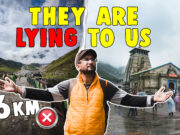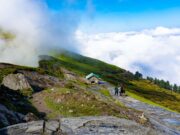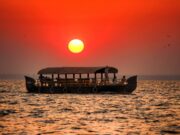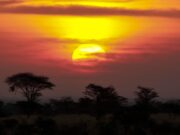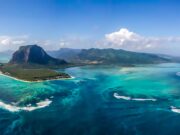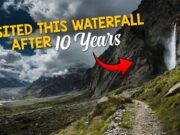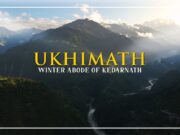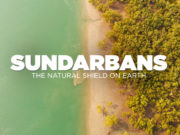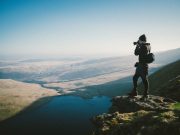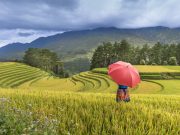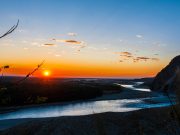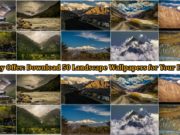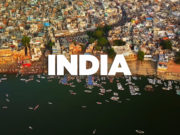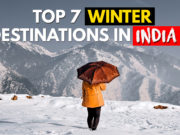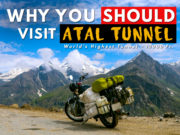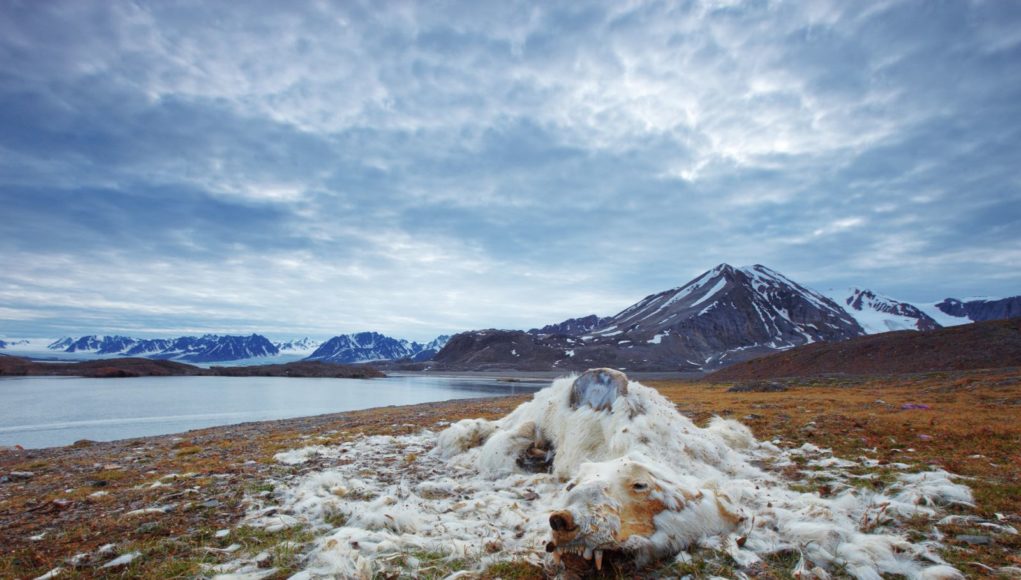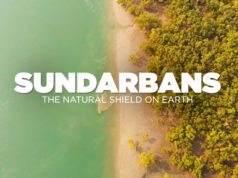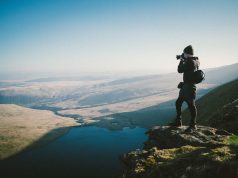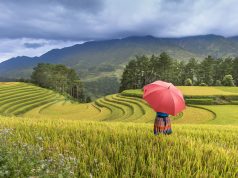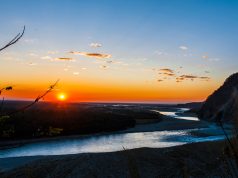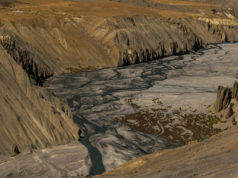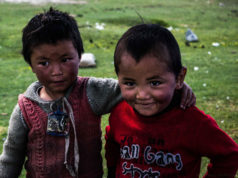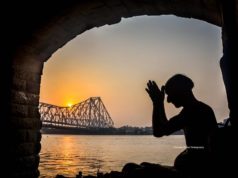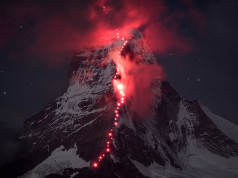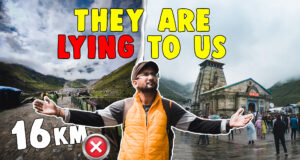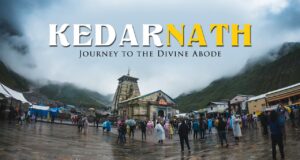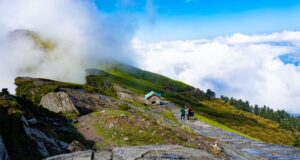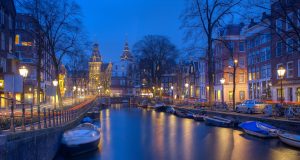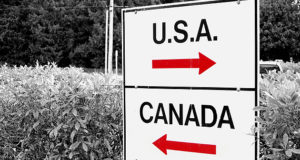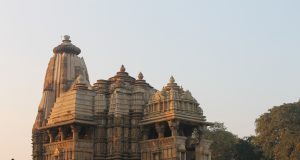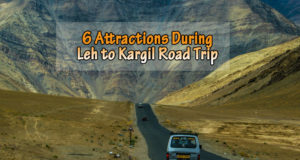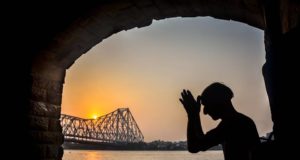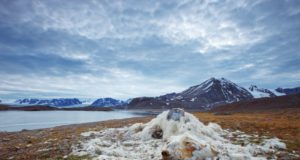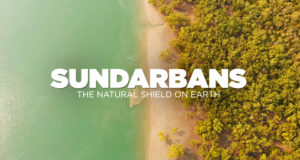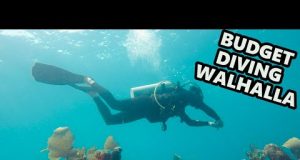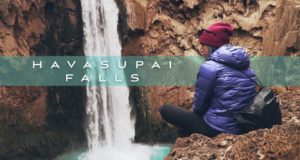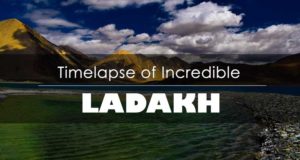2016 has recorded the world human population to be around 7.4 billion and based on current statistics, the population will burst to almost 110 billion by 2050. It almost makes one wonder if there is any, absolutely any space for any other living creature out there. Leave alone, jungles and forests, we reconsider the prospect of a lawn for some extra parking space or just some extra space. With resources becoming scantier and wants becoming bigger, it isn’t a wonder that nature’s cycle is completely thrown off balance practically all over the world!
With National Geographic’s Nature Photographer of the year, 2016, travel and nature photographers from all over the world have showcased the degraded outcome industrialization or plain human neglect.
Here’s a look into 10 best shots of the series
1. Life and Death
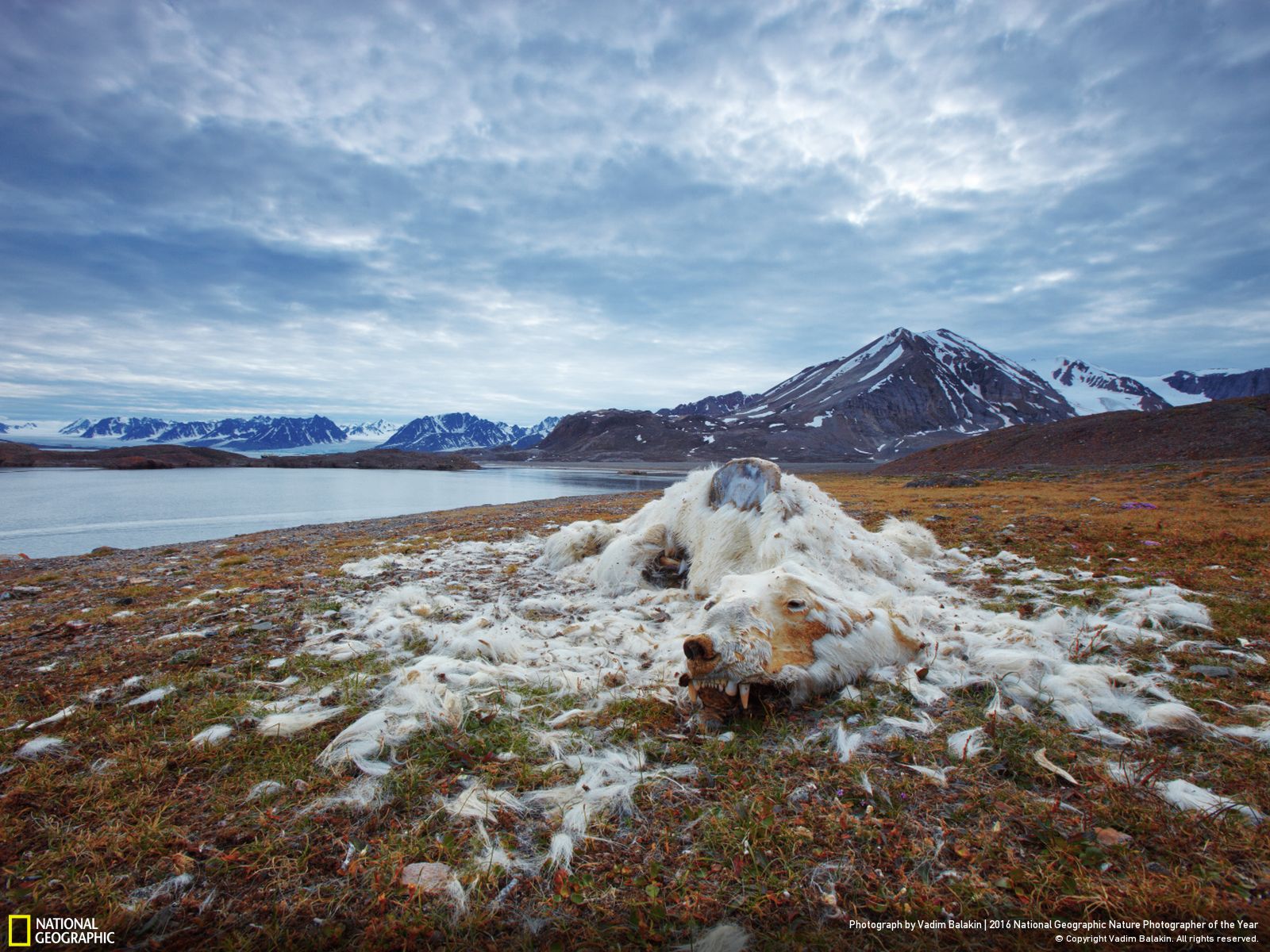
Photograph and caption by: Vladim Balakin
Global Warming isn’t just a myth. It is here and it is now. It has affected the habitat of millions of species around the world, depriving them of basic needs like food. An increasing number of animals are succumbing to starvation because of lack of natural prey. Such scenes will continue to increase until they are no more a novelty.
“These polar bear remains have been discovered at one of the islands of Northern Svalbard. Unfortunately we do not know definitely whether the bear died from starving or aging, but more likely if we see the good teeth status – from starving . They say nowadays such remains to be founded very often – global warming and ice situation influence the polar bear population a lot. Svalbard, Norway, august 2014 Svalbard, Norway, august 2014”
2. The View Outside Facebook Headquarters
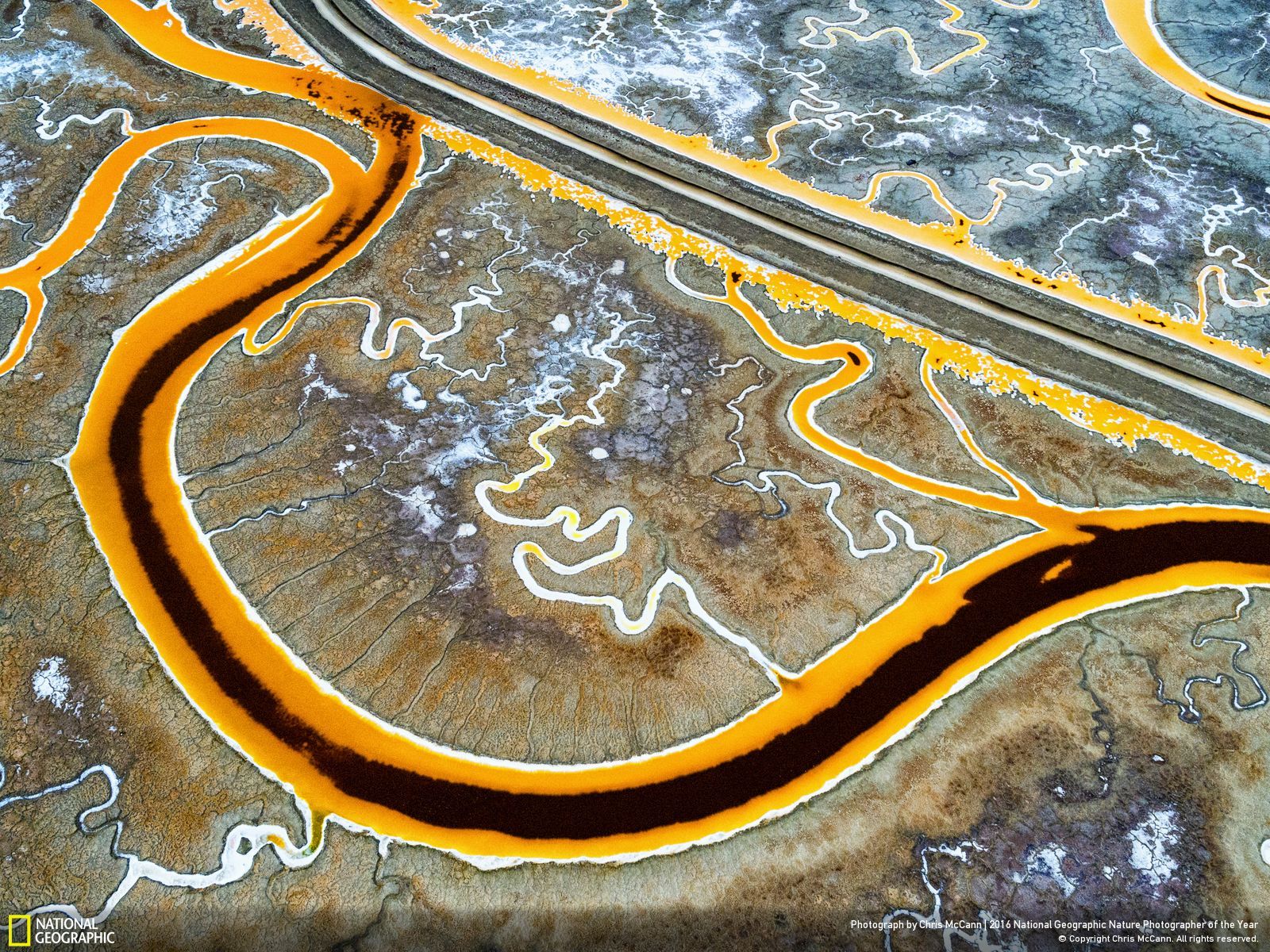
Photograph and Caption by: Chris McCann
Our natural reserves are depleting at an alarming rate to suffice for the growing need of the human population. Although many government and independent agencies are working towards reversing or slowing down the effects of procedures like mining, the damage seems to be almost irreversible.
“Eighty percent of the San Francisco Bay Area wetlands – 16,500 acres – has been developed for salt mining. Water is channeled into these large ponds, leave through evaporation, and the salt is then collected. The tint of each pond is an indication of its salinity. Micro-organisms inside the pond change color according to the salinity of its environment. This high salinity salt pond is located right next to Facebook HQ where ~4,000 people work every day.”
3. Toxic Vanity
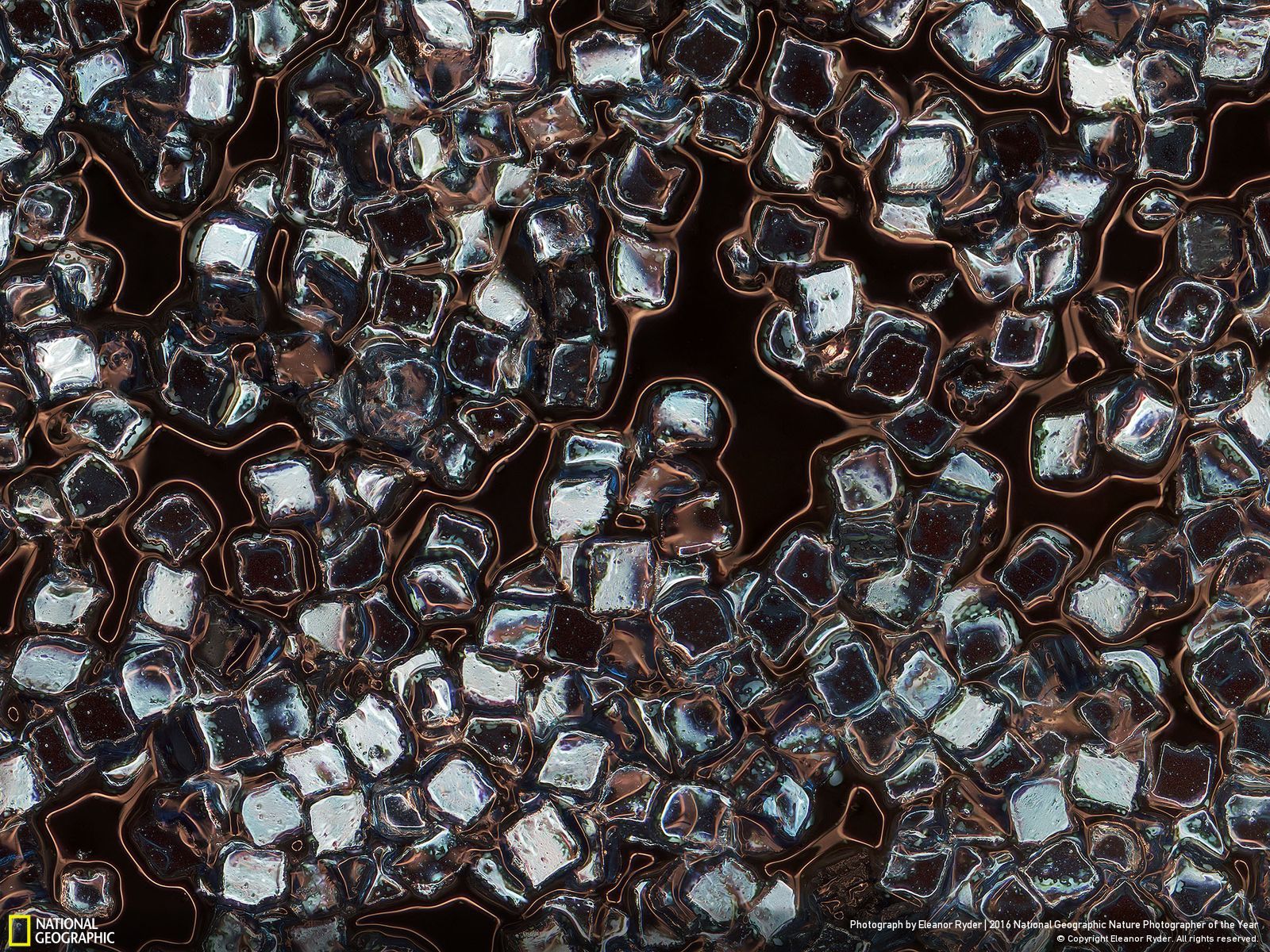
Photograph and caption by: Eleanor Ryder
As pretty as a picture has an ugly truth. Plastic has spawned every inch of our lives and pretty much every being’s life other than us too. Though incredibly useful and convenient, the one small factor that it is non biodegrable has proven to be its biggest issue.
“This image is a magnification of plastic particles in eyeliner exploring just one facet of the synthetic swarm suspended in our oceans. The particles, lash lengthening fibres, illuminating powders and glitters these products contain are in fact tiny pieces of plastic. Every time we wash these products from our bodies or ingest them as we lick the glosses from our lips, we unknowingly add to the trillions of micro plastic particles currently infesting every level of the ocean.”
4. Walking through Ashes
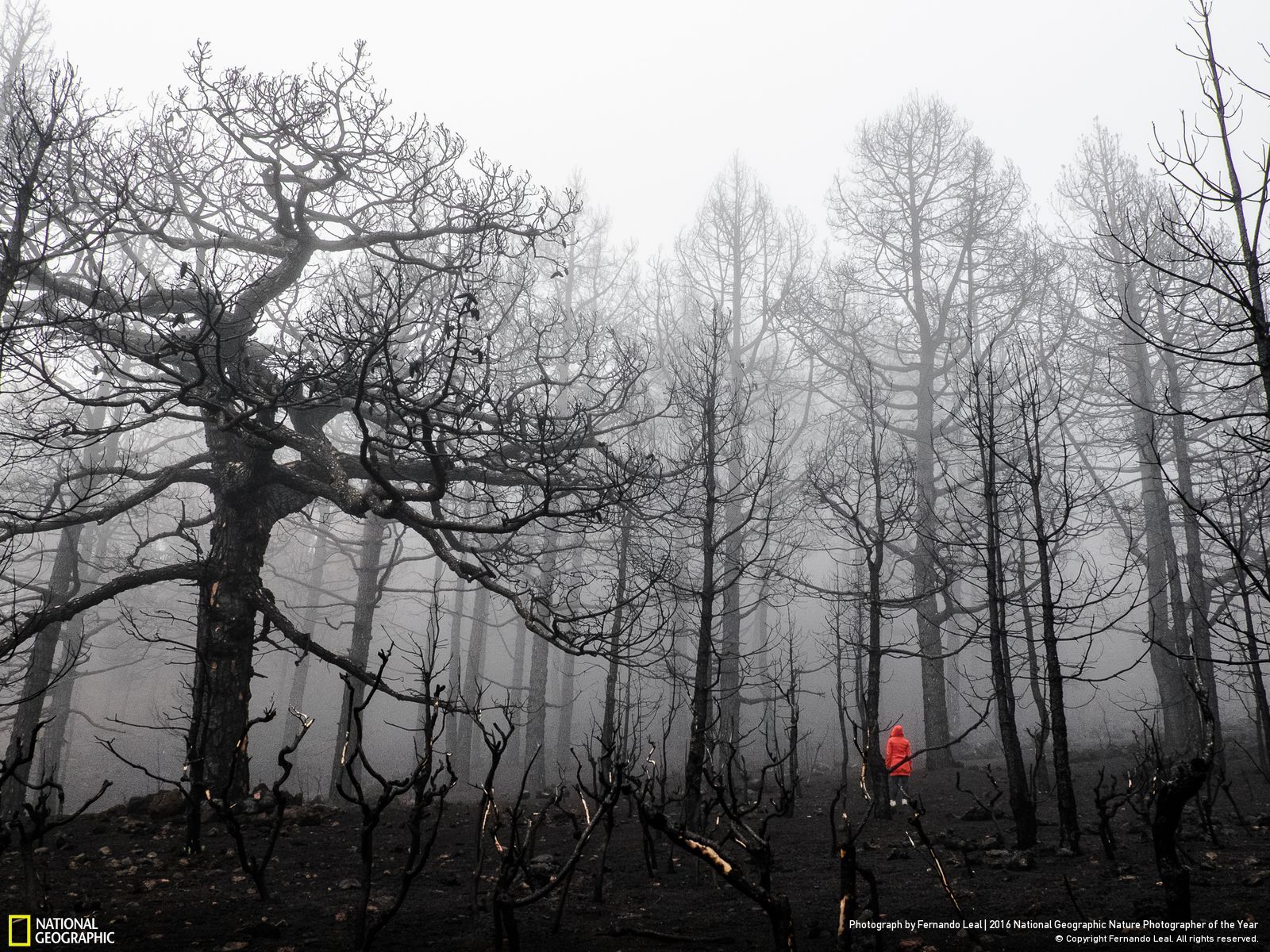
Photo and Caption by: Fernando Leal
Humans have never been the most careful of all species. With our mostly blatant disregard for other life, it isn’t a wonder that we have caused the destruction of so many natural habitats,
“The fog makes its appearance where before there was the green of the canary pine trees (Pinus Canariensis), now only remain ashes after the carelessness of a tourist caused a wildfire that devastated with 10% of the surface of the little island of La Palma and a mortal victim was claimed.”
5. End of world, End of light
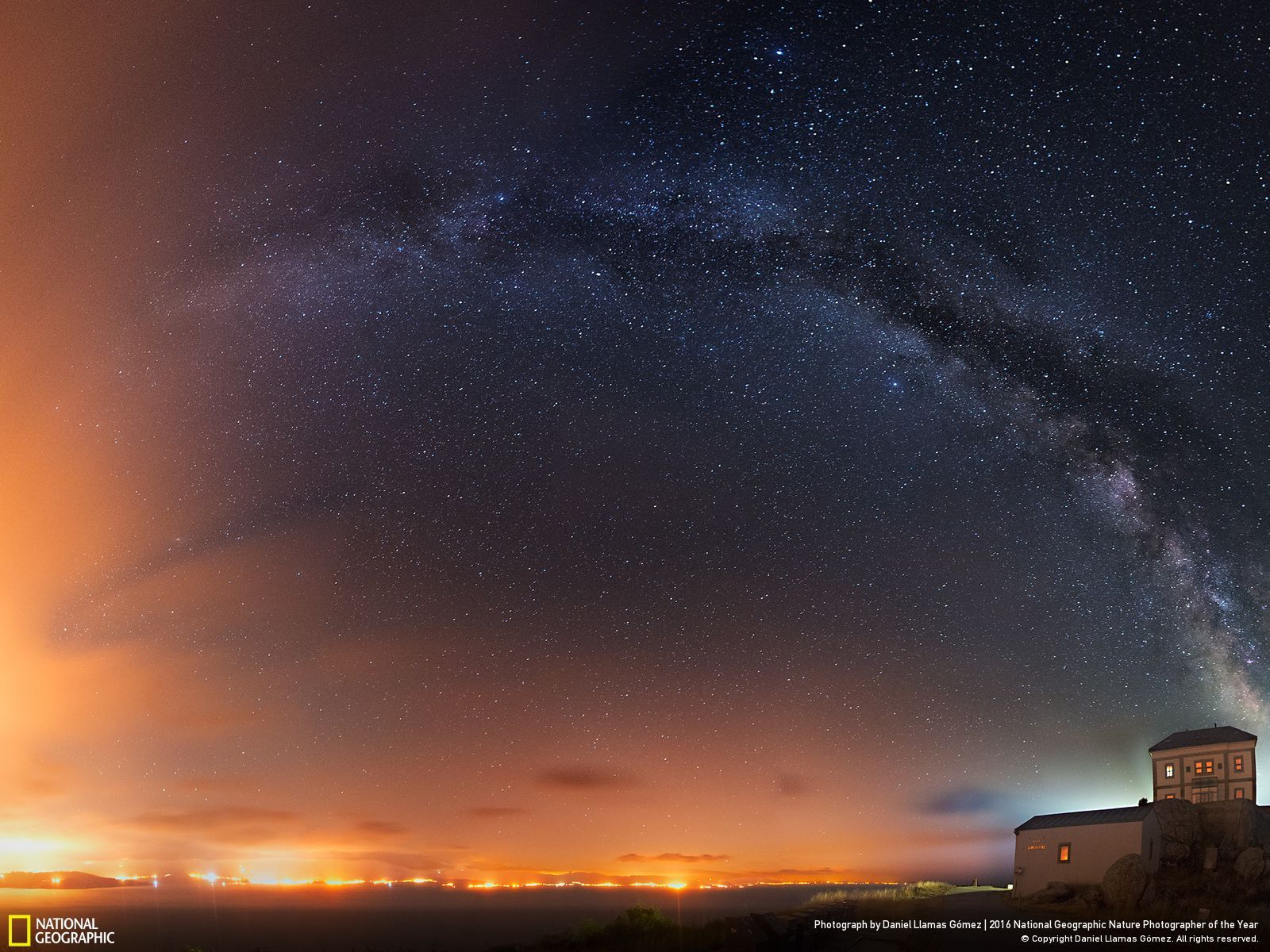
Photograph and Caption by: Daniel Llamas Gomez
With our skies virtually being obliterated by the amount of smoke and smog generated, it wouldn’t be a surprise if seeing stars or getting a peek at the moon becomes a rarity for our children. With blazing lights burning through the day and through the night, the night cover is lost, completely throwing off the natural clock.
“Reach the westernmost point of Europe, where ancient Romans decided that there just the end of the world, Finisterrae, facing the immense Atántic Ocean. A place where we would expect to find best firmament, the darkest sky. And yet it is so light that it seems impossible to see a star. There is a eternal fight between LIGHT and DARK. Always interpreted as good and evil, and everyone understand that dark is evil. But in this fight I´m at the side of the dark at the side of stars and milky way.”
6. Market Alley Cleaner
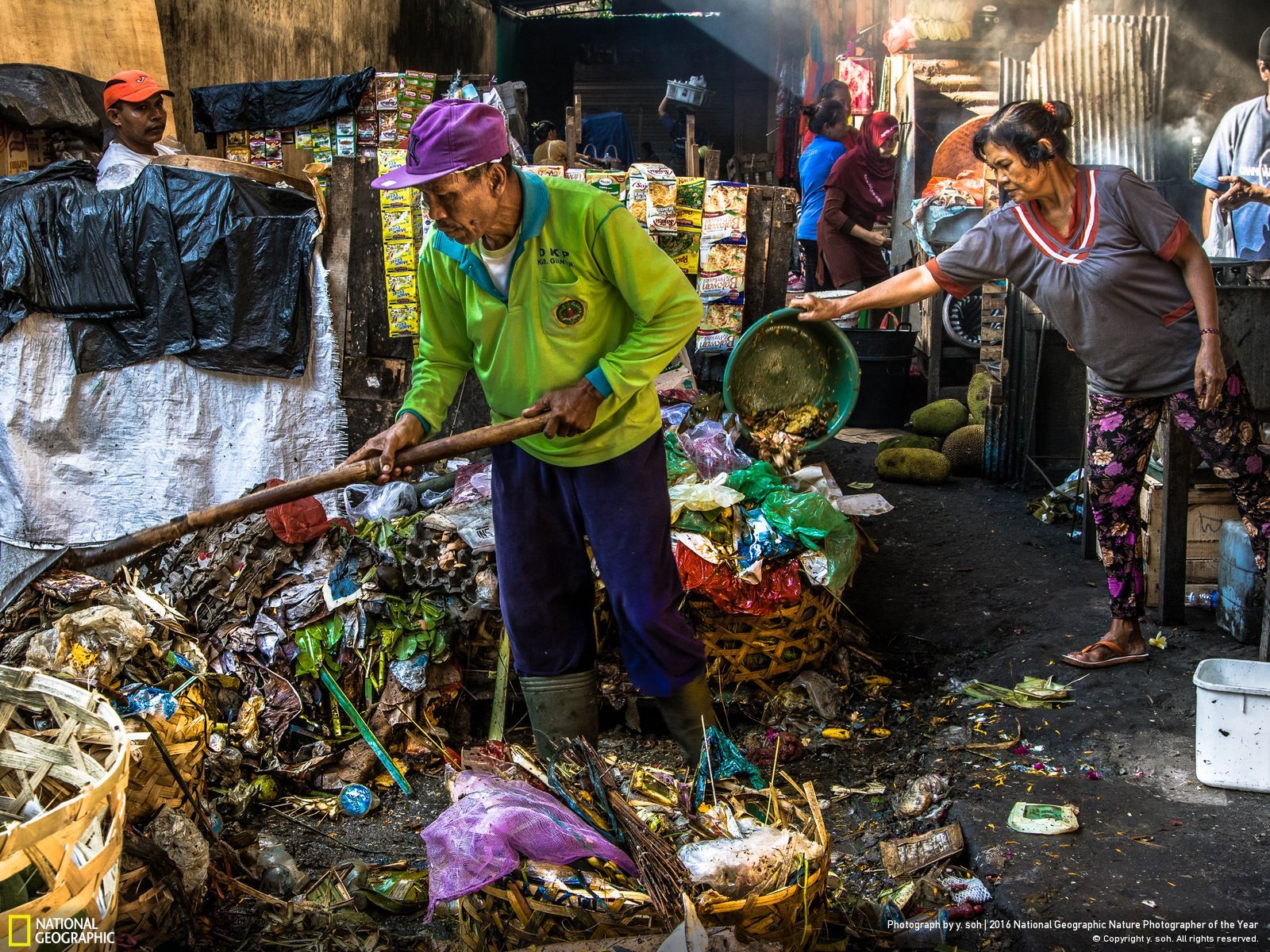
Photograph and Caption by: Y. Soh
The wide discrepancy between waste generation and Management is a looming issues in both developed and developing countries in the world. The amount of human filth generated is huge and quite frankly there is nowhere else left to dump it.
“A cleaner was seen scooping the garbage while a woman seller was throwing more garbage in the morning, not a fair view but it showed how far the waste management lag behind waste production.”
7. Aladdin’s Cave
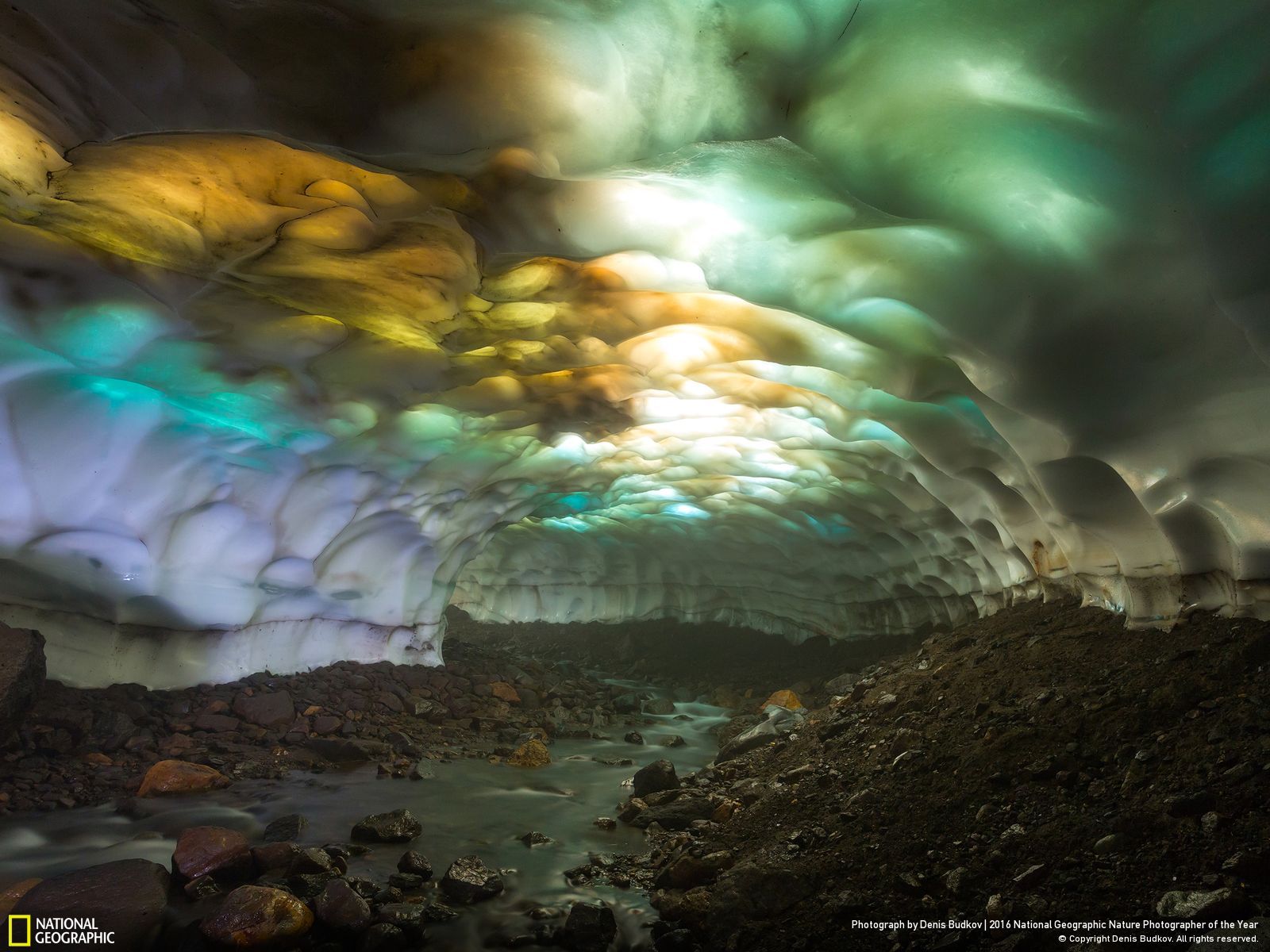
Photograph and Caption by: Denis Budkov
Glaciers are one of the primary sources of fresh water for the greater part of the world’s populace. Global warming have fast begun to hit these and the accelerated rate of thinning of glaciers is a cause of great concern.
“Snow cave on the slopes of the volcano Mutnovsky. Due to of global warming, glaciers have begun to decline. As a result, the ceiling of the cave became thin and the sunlight creates a wonderful picture of the different colors.”
8. Scars of Labour
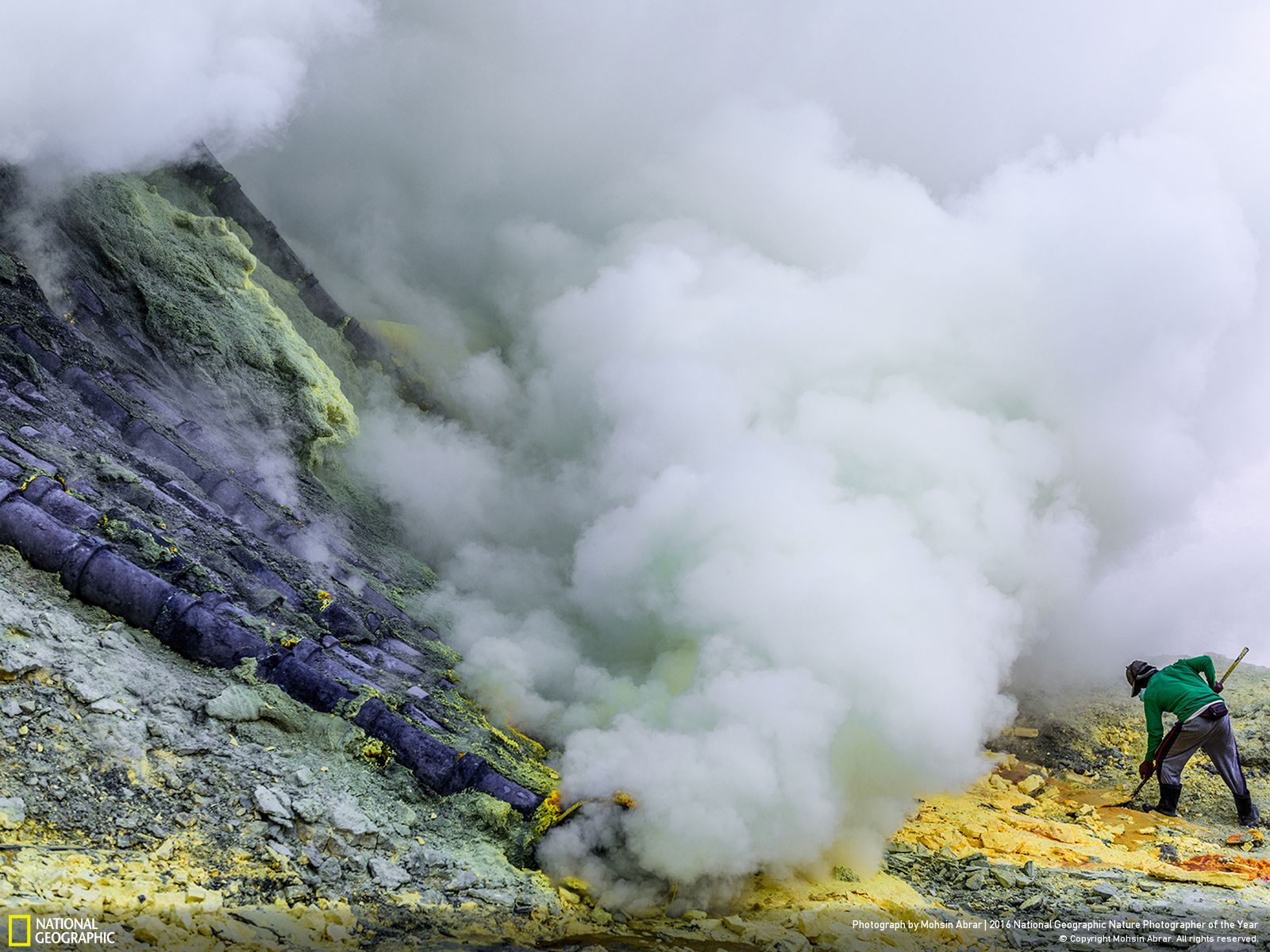
Photograph and caption by: Mohsin Abrar
It is almost laughable that for the comfort of the elite few of the world, the poor have to suffer. Millions of people, mostly uneducated and under-skilled are employed at working at sites which are fatally hazardous. They possess minimum or no protection at all. Along with this, digging deeper and deeper into the Earth unleashes those demons which only nightmares are made of.
“This live volcano in Indonesia emits sulphur 24×7 and it is channelized for commercial usage of sulphur, the negative impact it leaves on the environment, plants and humans are beyond imagination. In the human impact apart from the population which stays around the area the traditional sulphur miners of East Java bear the scars of their labour – poisoned lungs and skin crisscrossed with burns and scars. Leading to acid rain and lifeless lakes are some other impacts”
9. The Flying Hook
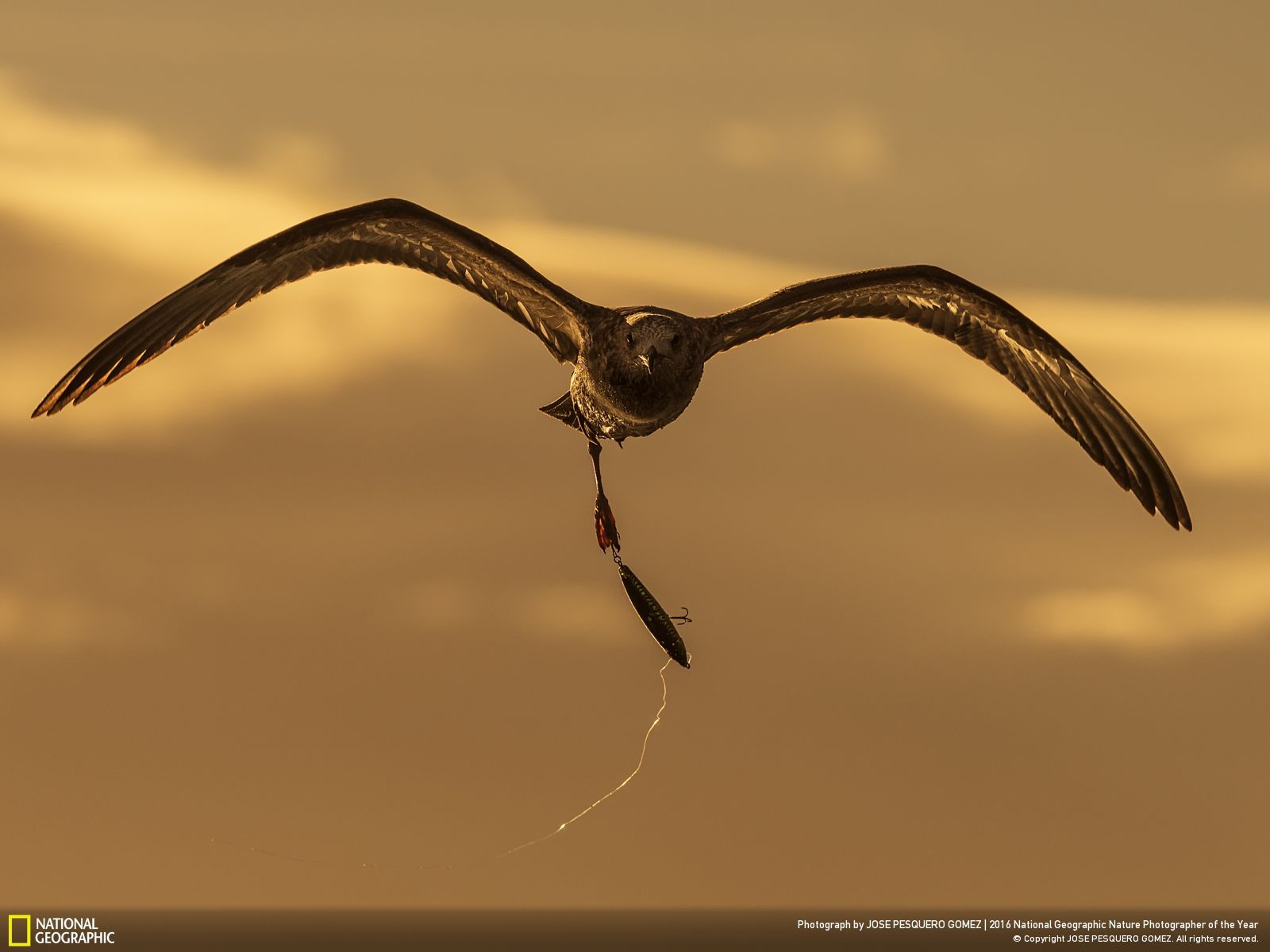
Photograph and Caption by: Jose Pesquero Gomez
Be it waste generation or hunting, animals on land, water and air are equally affected. Trying to up our natural surroundings to give ourselves a better life isn’t exactly working out for any other species out there.
“When you’re witness of scenes like this, something stirs in your interior. You feel equal or more injured than the animal itself, having a deep feeling of suffering. I really had an intense need to try to reach the poor gull and release it from its hook. Because you’re aware its life is in serious danger and that situation will lead it inevitably to a next death. Hopefully soon there will be a day when human beings can be reconciled with its natural surroundings.”
10. Turtle killed and discarded by the shore
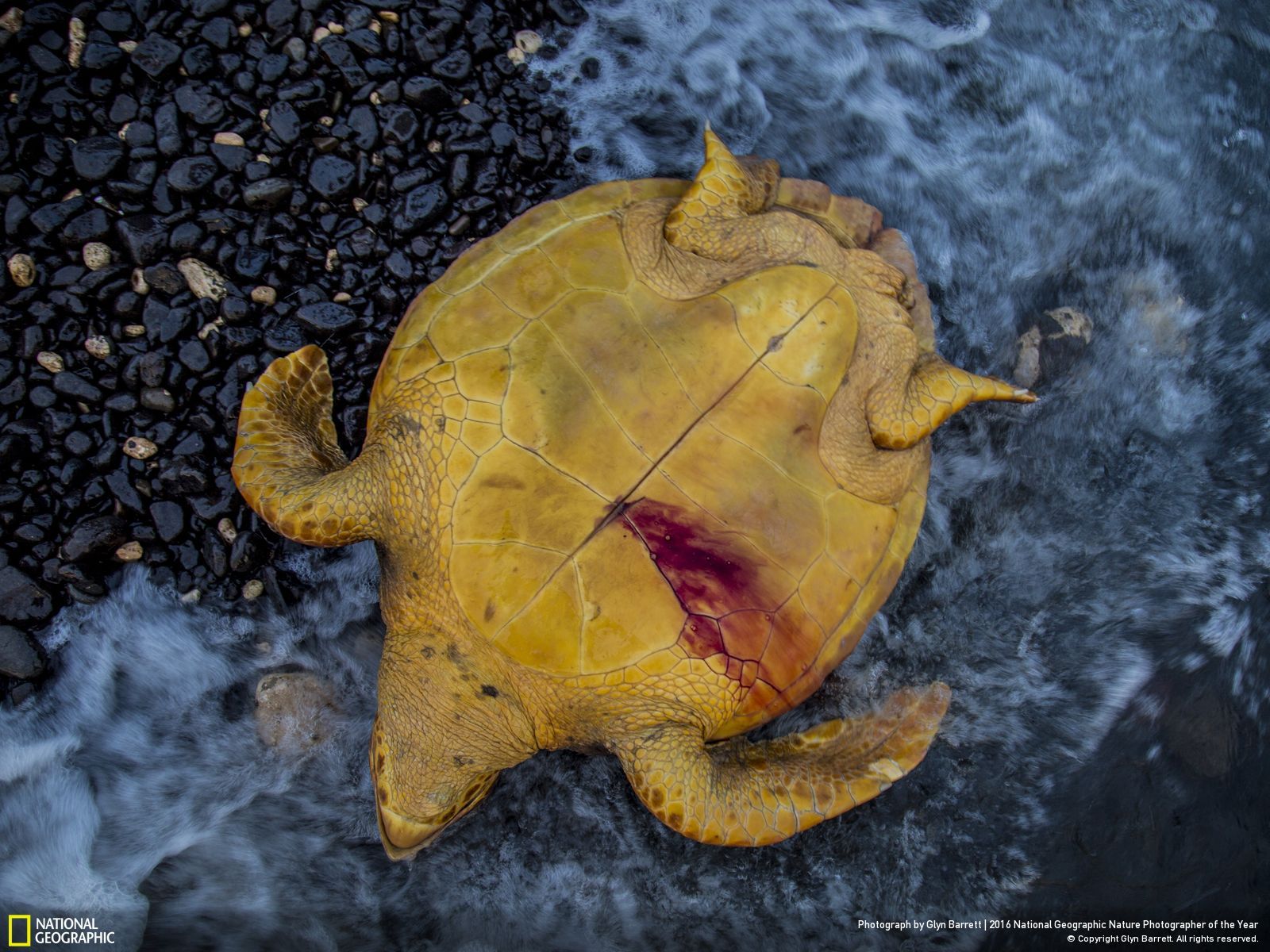
Photograph and caption by: Glynn Barrett
An easy way into money is by hunting and poaching. Killing endangered animals for their skin, teeth, shell, bone or meat is illegal in most nations. However this makes these items more precious on the black market, tempting people to indulge in poaching still. When will the greed stop?
“I was working on Sal island with a local NGO on their turtle conservation and education project. Nightly we patrolled beaches to dissuade poachers and record data on turtle activity. I found this turtle early in the morning on one of my patrols washed up on the beach. She had been stabbed through the plastron with a long sharp instrument. I am assuming the poachers were disturbed before they could finish the butchering and just ended up throwing the dead/dying turtle back into the water.”
There might be no going back for us but there is still hope of building a better tomorrow. Our daily activities don’t just affect Nature but us too in the long run. Simple sustainable moves like waste segregation, rain water harvesting and planting trees can solve an imminent global crisis. If all of humanity takes tiny steps to stop pollution on a personal level, the cumulative effect is going to be 7.4 billion strong. There has to be a new beginning or it is just the end.


